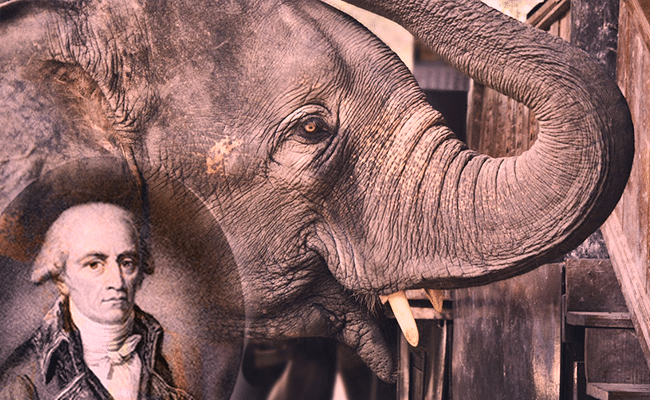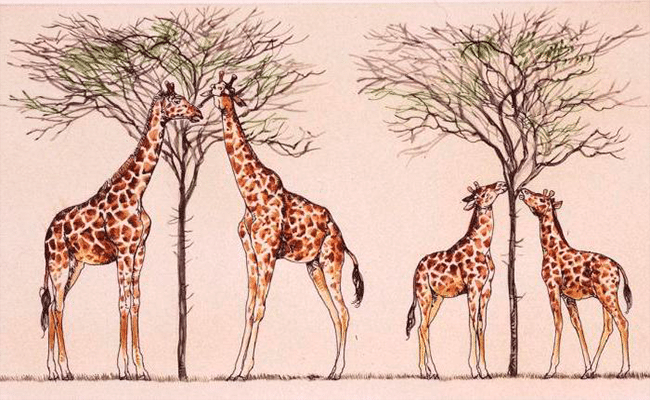The evolutionary principles and theories They have made rational man reach high levels of knowledge, knowing the origin of his existence and the changes in the species, has influenced the development of society and culture.
Different movements such as humanism and naturalism together with philosophy, have contributed to the scientific thought of being the possibility of proposing different hypotheses. To delve further into the subject, we have seen different theories to demonstrate human and animal evolution; And on this occasion, you will learn about biology with Lamarck's Theory of Transformism and its importance for different terrestrial species.
Who was Jean Baptiste de Lamarck?
He was the first man to propose the first theory of biological evolution, as its name implies, it is based on the species evolution according to the foundation that life had evolved from a simpler way of life, adapting then to the scenarios that forced it to evolve.
In 1802, he expounded the term "Biology" to refer to the science that describes living beings and studies their behaviors, origins, habitat and other development factors; in addition, he founded the paleontology of invertebrates.
What is the transformism theory about?

This theory is raised by Lamarck in his book "Zoological Philosophy", within it he explained different terminologies to refer to the evolutionary process that different species went through in order to become more skilled.
All the change that Lamarck describes about living things, It is explained under the theory that all the environmental factors that directly affect the life of the being, are and will be the conditions for it to continue in the process of evolution, until it reaches the appropriate development that adapts to its own needs.
The only factor that can slow down the process of evolution of the different species is their ability to adapt to changes, however, it does not stop the process.
Research bases
A priori, Lamarck argues that everything is undeniable development and change in a speciesIn the same existence there are different habits that are changing depending on it, due to the diversity of changes that arise in a scenario, the species must modify their habits in order to survive.
With these two premises as foundations, he concluded the following laws: the animal that constantly uses all its organs to make use of the environment, is destined to remain with them; On the other hand, those who do not use some of their organs will have to evolve to get rid of the weakness.
Genetics will be the one that will perpetuate the change of the species, through long experimental processes at the biological level of the same until reaching the true adequate structure.
It also exposed the following concepts or reasoning:
- The organisms that are known today have remained on the earth and have been created and modified by it.
- As the world evolves, circumstances become simpler thanks to the abilities that all species acquire.
- Everything is terrestrial develops its organs to convenience so that they are much more useful for the following generations.
- Diversity develops thanks to the appearance of new evolved species.
Research rationale
Depending on the habits of each species, a much more solid conclusion can be reached, for example, every circumstance will create a need in the animal, it must do everything in its power to supply it, by constantly doing an activity outside its motor possibilities, its own organism will be forced to modify its genetics and morphology to make the life of the animal much more useful and lasting.
Thus the weakness is diminishing and they are creating increasingly stronger species capable of surviving in any environment.
Examples describing the theory

To illustrate a little more about the different evolutionary theories that Lamarck raises, we show you the following examples:
Example 1
This example is the most used to explain Lamarckism, it is about the evolution that the giraffe went through.
In the beginnings of the species, giraffes had very narrow necks, which did not allow them to access the food in their diet, in turn, they acquired water through the leaves of the trees due to the long times of drought that they spent in the habitat where they resided.
Giraffes had to make an extra effort to reach the leaves of the trees that gave them hydration, thus, the following generations were modified thanks to the longer-necked giraffes that were the ones that lived the longest.
In time, the giraffes managed to reach an adequate neck length that allowed them to continue the evolution of the species.
Example 2
La elephant trunk, was modified thanks to the long and difficult times of drought that they were going through, this factor did not allow the elephant to access the scarce places where it found water, so little by little its trunk evolved to the specimen that we know today.
Example 3
Several species found it necessary to evolve in order to make their defense mechanisms much stronger, such is the case of the porcupine, which had to implement spines in its super fragile body to defend itself from predators.
Example 4
Birds have adapted their wings to the different climates and habitats where they develop, larger and elongated or smaller and flatter; This is the case of the penguin, this bird has wings that are not used to fly, but to be able to swim and look for food.
We hope this entry about the Theory of transformism has been to your liking. In case the answer is correct, you could consider sharing the entry in your networks; While we also highlight the fact of being able to write a comment, we will try to respond to you as soon as possible.
very good and clear, thank you very much